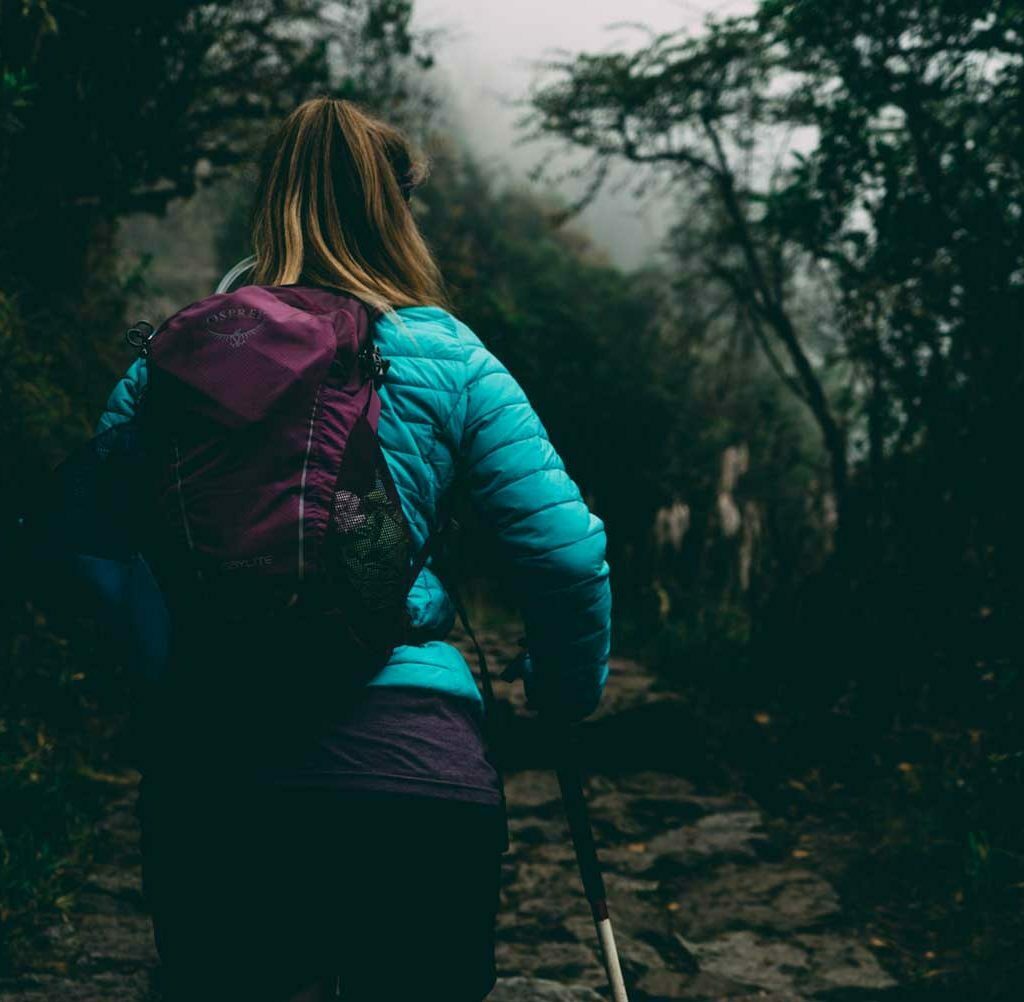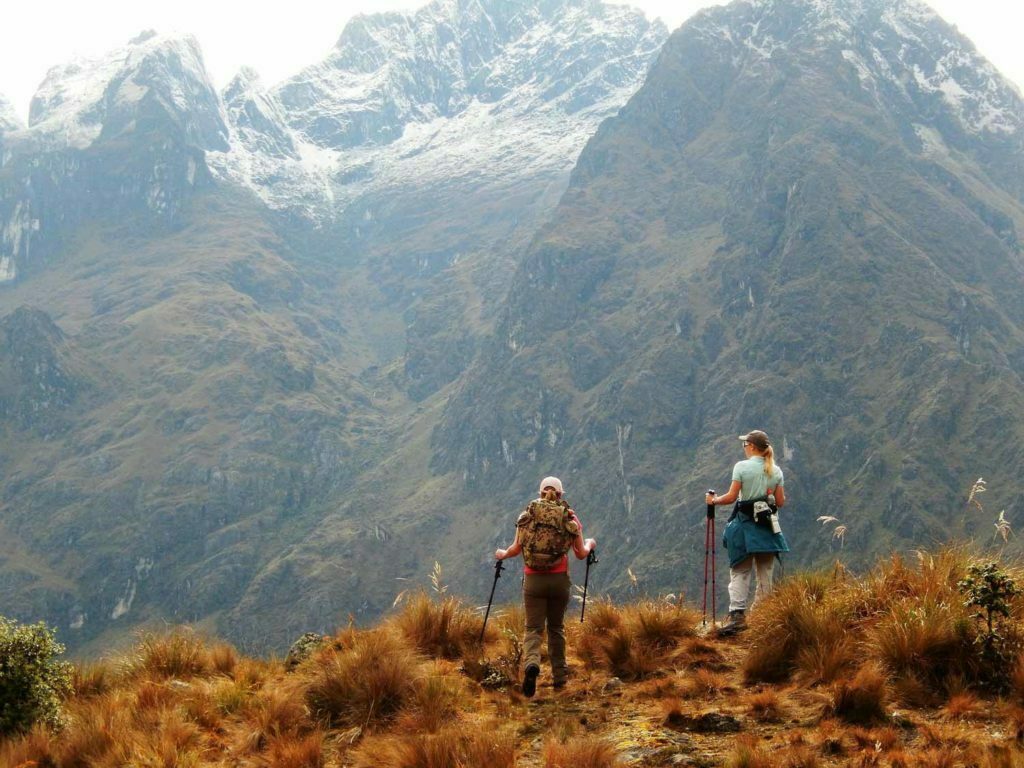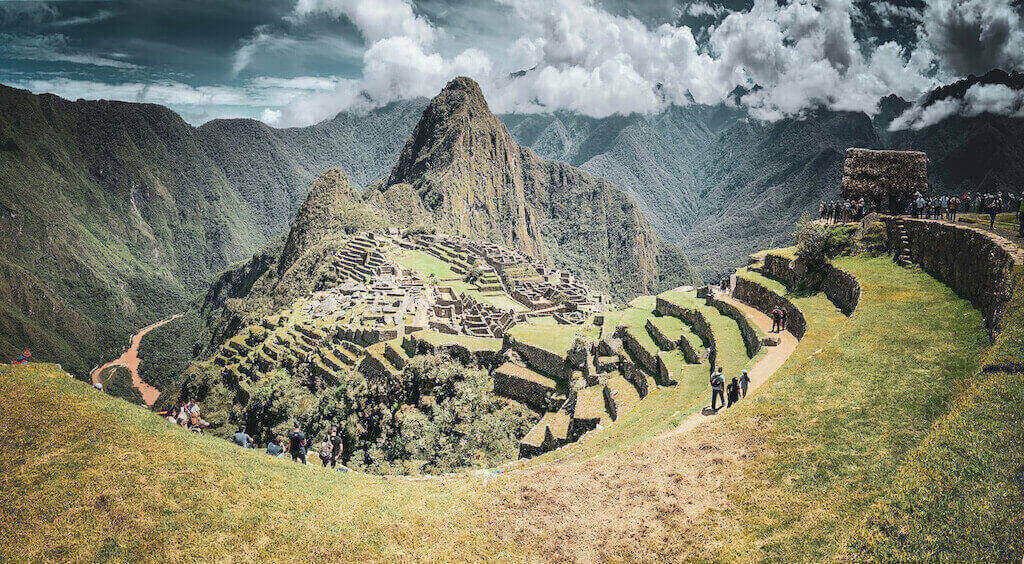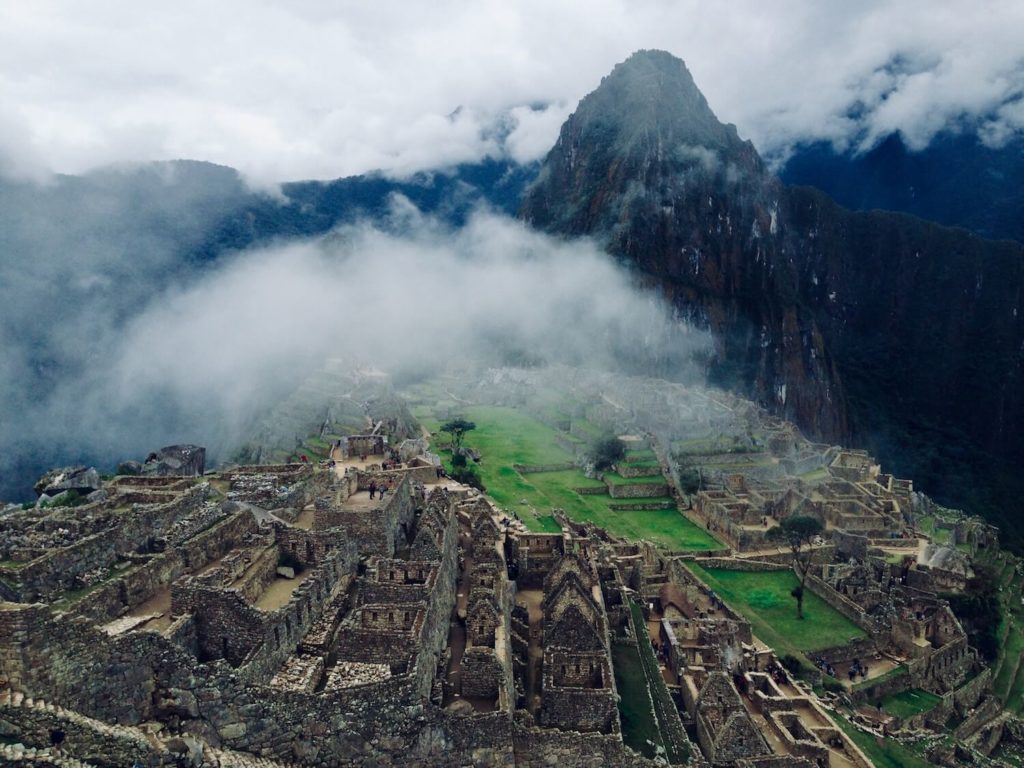The hike through the Inca jungle to Machu Picchu is by far the most adventurous option and one of the best alternatives for both the Inca Trail and the Salkantay Trek in Cusco. It is also the most varied in terms of activities compared to the others.
The famous adventure trek begins with a mountain biking experience from Abra Malaga, then we have the option of grade III and IV rafting, jungle trekking, cocalmayo hot springs and a zip-lining, the last day we visit the wonder of the world, Machu Picchu.
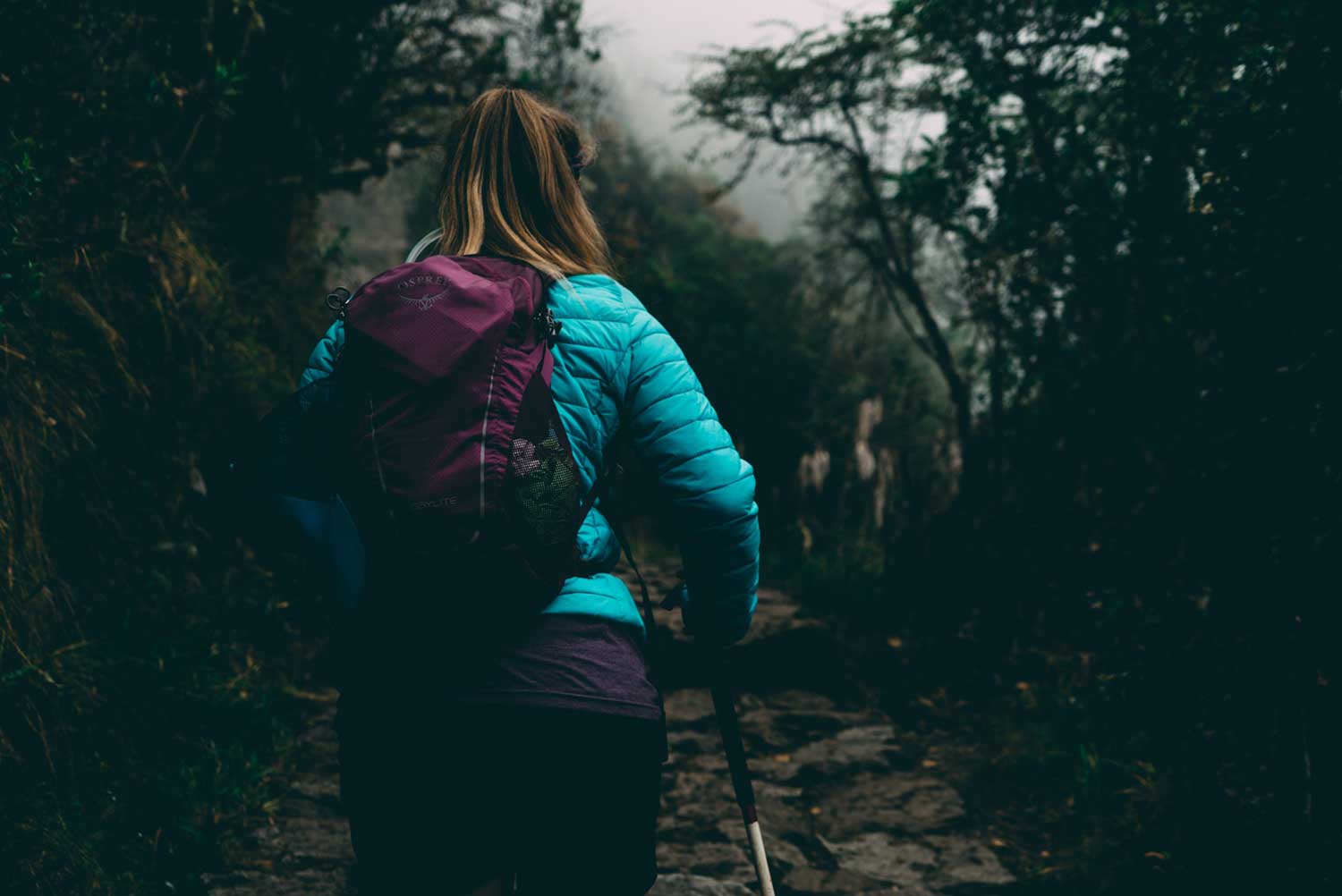
Most of the trekking companies offer the Inca jungle hike on a 4 day and 3 night itinerary, although it is possible to complete the hike on a 3 day itinerary on a route they call the short Inca jungle. The accommodation on the route is a combination of hostels or cabins and hotel.
The hike seems to be natural for adventurous types who like exciting and adrenaline filled experiences.
For the lovers of the pure walk and trekking in the Andes, this walk is not something that they like, for it they can do the classic Inca Trail or the Salkantay trek, which are walks with camps of 4 and 5 days until arriving at Machu Picchu
Below we have all the detailed information about the Inca Jungle Trek itinerary and its road map. We have also provided guidance on the best time for this trip, acclimatization and altitude sickness, the best tour operators, and packing lists.
Remember to book your tour and tickets to Machu Picchu in advance.
Inca Jungle Trail Route
Here is the itinerary for 4 days trek. We know that there are 3 days trek, but, in reality what is cut is the 2nd day of the 4 day tour.
Day 1: Cusco – Abra Malaga Pass – Santa Maria
The journey through the Inca jungle begins with a 3 to 4 hour hike to the top of the Abra Malaga pass, which is about 4,316 meters above sea level.
The day starts when the transport picks you up at your hotel or a hot spot, and this way begins one of the best experiences, then takes you to pick up all the safety equipment and bikes for the route.
The trip heads north from Cusco (3,400m), and passes through the town of Chinchero before falling into the Sacred Valley, where you will see the Urubamba Mountain Range for the first time. A unique and impressive landscape awaits you, which will undoubtedly surprise you.
You will cross the Urabamba River to the town of the same name and continue to Ollantaytambo (2,792 m). Some tour operators may stop here for breakfast before continuing along a very impressive and winding road to the top of Abra Malaga. This is the highest point of the trek (4316m) and provides incredible views of the Peruvian Andes.
Mount Veronica (5680m / 18635ft).
Veronica is the highest peak of the Urubamba Mountain Range. Its Quechua name is Wakay Willca, which means “Sacred Tears”. This image was taken from the other side of the Sacred Valley, near the Abra Malaga pass. She will land at the top of the pass and begin to prepare for one of the most exciting cycles of her life.
The route from the top of the Paso de Málaga to the final destination is all downhill – 4316m to 1196m – and just under 60km away. Most people take 4 or 5 hours to cover this section.
The route is not very strenuous, in fact you can drive freely most of the way and will use the brakes instead of the pedals; however, the route is very windy which can make it a bit dangerous, particularly because there are many blind corners and the cars on the route (which are few and far between) drive like maniacs!
How is the biking the Inca Jungle Trail?
On this part of the route you will be provided with high visibility equipment, reliable mountain bikes and protective gear such as a full-coverage helmet and potentially body armor (this may be too much for some people).
A support vehicle is usually behind you and if you get tired or want to stop, you can get in the car and enjoy the rest of the route by watching.
You will stop for lunch on the way and arrive at Santa Maria (1,196m) in the mid-afternoon. If there is time and the season is right (dry season, that is from April to October) you can go rafting on the river. This is an optional extra offered by tour operators and is charged separately. The cost is about 50 dollars per person.
Note: sometimes the visibility is very poor in the Abra Malaga Pass. If there is a lot of fog, the bike tour will probably be cancelled and will take you directly to Santa Maria.
Day 2: Santa Maria – Santa Teresa
After a quiet and a little hot night (because of the weather) in Santa Maria, we have a nice breakfast, “take advantage of eating well, a long walk is waiting for you”, then we get ready and start the adventure.
The hike begins by passing the river where the rafting is done the previous afternoon, with a walk that begins smoothly, but changes little by little, before continuing on a series of winding roads, where we pass by streams and several agricultural plantations, one of which is an authentic Inca trail.
The landscape has a lush vegetation typical of the high jungle of Peru. Remember to use insect repellent, and beware of nasty sand flies that leave bites that can last for weeks.
On the way you will see coca, coffee and several fruit tree plantations – everything grows in the jungle! After lunch and a 6-7 hour walk you will arrive in Cocalmayo, an area known for its hot springs.
Most hikers stop here for a dip, so remember to have your bathing suit handy. From the hot springs the walk to your lodge in Santa Teresa (1550m) is only 30 minutes.
This day you will see a lot of vegetation and our guides will explain to you about the plantations and products that grow in this part of the Cusco highlands. From this part of the jungle comes coca, cacao and coffee.
Day 3: Santa Teresa – Hydroelectric Station – Aguas Calientes (Machu Picchu pueblo)
This third day we will make the famous Zip Line of Santa Teresa, this activity is optional, but we recommend you do it, you will not regret it.
The zipline option is sometimes included as an optional extra in tour packages, remember that this is one of the longest in Cusco and possibly in Peru.
If it is an optional extra, the cost is about $40 and includes transportation to the ziplines and 3 to 5 zippers, the highest of which is 150 meters above the ground, the last zipline is 2 km long.
After the zipper we will continue by car for about 30 minutes to the famous Hydroelectric, where the road ends and you have to walk, then we will have to continue by train walking for another 2 or 3 hours to the town of Aguas Calientes, or if you are tired you can take a train to Aguas Calientes from the Hydroelectric station (approx. 45 minutes, cost: ~US$25!).
Walkers who are not interested in the zip line will start this walk first thing in the morning or wait in Santa Teresa until the ziplines have finished their aerial tour.
The hike along the railroad track from the Hydroelectric Plant to Aguas Calientes is relatively easy, and we will find many wild animals (more birds) and vegetation.
Day 4: Aguas Calientes – Machu Picchu – Cusco
The fourth and last day of the tour starts early, first we must take the buses that start working at 05:30 and take 30 minutes to get to Machu Picchu, which opens at 06:00 AM.
If you are going hiking during the high season (May-September) expect the bus line to start before 05:00. If you decide to get up early, it is probably because you are anxious to see the sunrise from the Puerta del Sol (Inti Punku) which is a good 40-60 minute walk up a gradual slope from the Citadel.
After arriving at Machu Picchu in the morning, we will give you a 2 to 3 hour private tour of the main points of interest of the Inca citadel.
For this day we have many options, some prefer to climb to Machu Picchu and others to Huayna Picchu or just to the archaeological site.
The guides are easy to identify, they carry a card and a flag (some). The tours are private and the guide will be the same one who came with you along the route.
It is worth climbing Huayna Picchu if you still have energy and are not afraid of heights or simply the mountain Machu Picchu.
The climb is steep and strenuous, and it takes the average hiker an hour to reach the top.
The views from the top are breathtaking and worth the effort. There are only 400 permits to climb Huayna Picchu per day, so you have to book in advance if you want to climb, another option is to climb Machu Picchu.
Inca Jungle Trek Route Map
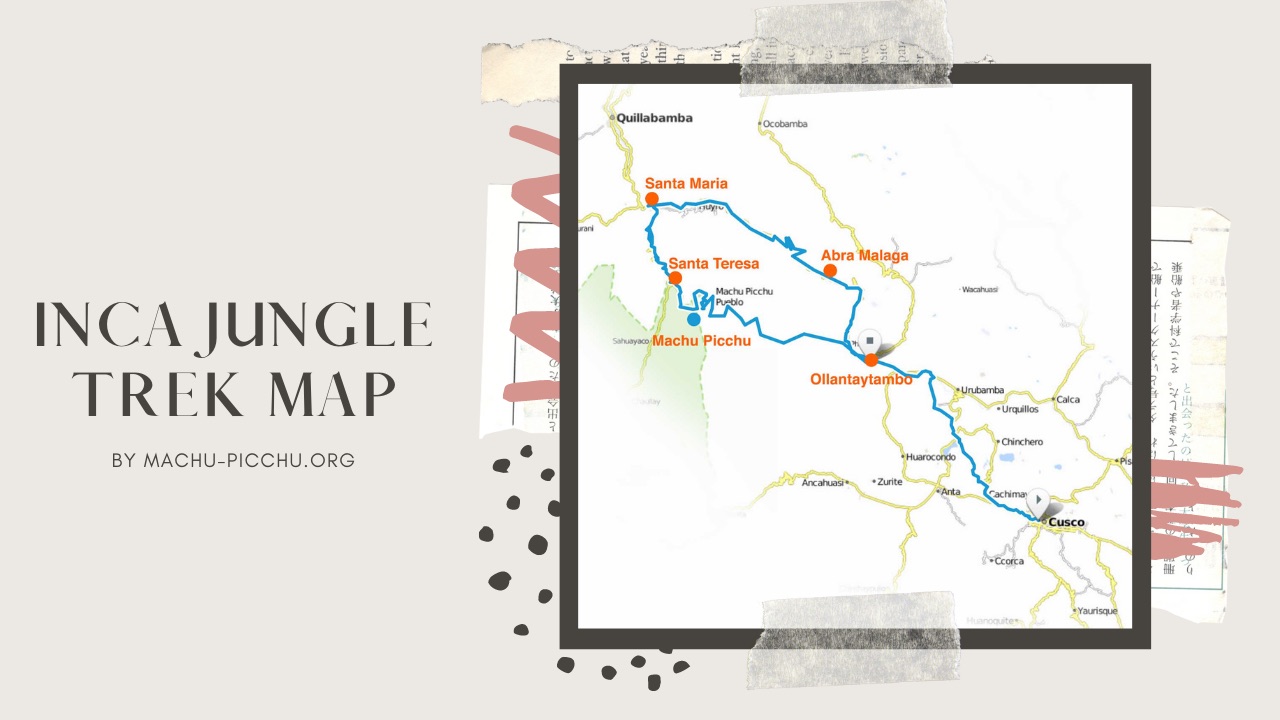
This jungle road map shows you the Inca jungle route from Cusco through the Sacred Valley to Abra Malaga. This maoa is suitable for both the 4 day and the 3 day short tour. From here the trekkers bike to Santa Maria, and then go to Aguas Calientes walking to Santa Teresa, and then end up in Aguas Calientes and the last day to visit Machu Picchu.
Best Time to do the Inca Jungle Trek
If you still don’t know, don’t be surprised that Cusco has 2 well-defined seasons throughout the year, a dry season from May to September, and a wet season from October to April.
Hiking in the Inca jungle can be completed year round, however, the heavy rains in January and February often cause landslides on the road and highway connecting Santa Maria and Santa Teresa and therefore, hiking in the Inca jungle is usually closed during this time of year.
The best time to take a walk in the Inca forest is during the dry season, or in the months of March/April and October/November. The last few months are particularly good if you want to go rafting in Santa Maria.
The trail is busier during the dry season, but not as busy as the classic Inca Trail or the Salkantay trail.
Temperatures are fairly constant throughout the year, with warm days reaching 20 degrees Celsius. The nights and first mornings are cold (in the single digits and sometimes fall below zero degrees, especially in the dry season).
It is convenient to take trekking clothes in layers so that you can go up or down the layers according to the fluctuations of the daily temperatures (see the luggage list below for more details about the layers).
About the altitude sickness in the Inca jungle trail
The Inca Trail is technically a high-altitude hike, although the amount of time you spend at altitude is actually very short.
The highest altitude you will reach is the Abra Malaga pass at just over 4,300 m. But, you will only be at this altitude for about 30 minutes at most. From this point you descend relatively quickly, as you are cycling, and end the day at an altitude quite low for the Andes, just under 1,200 m.
During the rest of the route the road undulates, but never goes beyond 2,000m. Machu Picchu itself is at 2,430m, which is still relatively low.
This means that altitude sickness on the Inca Trail is rare and not as frequent on some of the other trails in this region where trekkers spend a lot of time walking through passes over 4,000m, such as the Inca Trail and the Salkantay.
In fact, there is a greater risk of succumbing to the symptoms of altitude sickness before starting the journey. Most visitors to Machu Picchu fly to Cusco, which is situated at a high altitude of over 3,400 meters. Experiencing mild altitude sickness, such as a headache or nausea, is common for many visitors to Cusco.
It is important that you spend a few days acclimatizing to this altitude before continuing your climb, we recommend about 2 days, but it depends on your physical condition.
Another good option, if you have time, is to immediately descend from Cusco to the Sacred Valley, which is about 1,000 m deep, and rest here for a few days before returning to Cusco to join your trekking adventure through the Inca jungle to Machu Picchu.
Either way, acclimatizing a few days in Cusco or in the Sacred Valley before starting your trek is an idea worthwhile.
We have a very beautiful country house in Urubamba, where you can stay, if you want to know more, contact us.
Inca Jungle Trek Packing List
The packing list for an Inca Trail hike is very similar to that of a classic Inca Trail hike.
We recommend that you take only the basics, only the second day we will be on long walks, away from small villages, but the rest of the day, we can find small stores.
The key difference on the Inca Trail is that you will not be camping, and therefore will not need a sleeping bag or a heating pad, as blankets will be provided at the Santa Maria and Santa Teresa lodges.
The most important thing will be:
- Water bottle.
- Mosquito repellent (the strongest).
- Hat.
- Sunglasses.
- Sun block.
- Trekking shoes.
- Lightweight walking pants.
- Polos or T-shirts to change into.
- Swimwear (for the Cocalmayo hot springs)
- Passport, copy and original.
- Camera
- Extra battery or portable charger
Training and physical preparation
Inca Jungle Trek is a diverse adventure with many different activities: hiking, biking, whitewater rafting and zip line. The trek is definitely more suitable for young people with an adventurous heart.
Tour Costs and prices
In recent years the number of hiking companies offering tours in the Inca forest has increased considerably.
There are agencies where they have quality equipment, super professional guides and quality services along the route.
The prices vary according to the options you want, ranging from 329 USD and can increase if you want to add options such as Huayna Picchu or Machu Picchu mountain.
Some agencies offer a little lower, but, don’t forget to read comments in tripadvisor and other pages.
History
The story of how Inca Jungle Trek began goes back to the person who started this route, we are talking about Lorenzo Ccahuana, he started to guide groups of tourists alone, sometimes with the help of his son, so many years went by until he founded the company “Lorenzo Expeditions“.
FAQS
The main difference is that Inca Jungle is adventure trek and Salkantay trek is a hiking tour.
Inca trail is the main and famous trek in the world, but it has limit entrance space, so Inca jungle trail becomes one of the best alternatives to reach Machu Picchu by doing a hike.
 English
English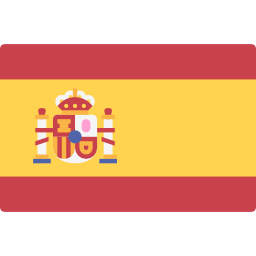 Spanish
Spanish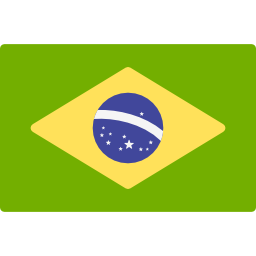 Portuguese
Portuguese
